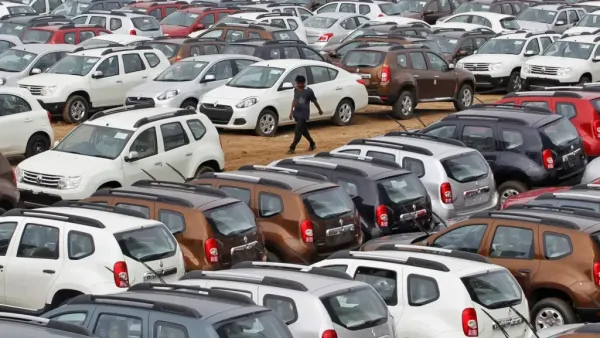
With unsold vehicle stock piling up at dealerships, passenger vehicle (PV) manufacturers scaled back fresh dispatches in June—marking the second straight month of decline after eight consecutive months of growth.
According to the Society of Indian Automobile Manufacturers (SIAM), dispatches from manufacturers to dealers fell 7.4% yearonyear (yoy) in June to 312,849 units. Despite the slowdown, this figure remained higher than the retail total of 297,722 units for the month, indicating continued inventory buildup.
Just a week earlier, dealers reported a rise in inventory levels—from 53 days to 55 days—prompting many to ramp up discounts in a bid to clear stock.
Shailesh Chandra, president, SIAM, said, “Consumer buying sentiment has been an issue since the last few quarters. The growth has been in the low single digit. The entry segment is facing a problem whereas the premium segment there is not such an acute issue. It is a tale of two cities.”
The industry’s expectation of benefitting from the reduction in vehicle loan interest rate and income tax benefit has not fructified. Carmakers are now banking on a bountiful monsoon to lift buyer enthusiasm for the rest of the year.
For the April–June quarter, PV dispatches declined 1.4% yoy to 1,011,882 units—marking the first quarterly drop in several terms.
The demand slowdown has coincided with emerging supply chain issues. Automakers are reportedly struggling to source permanent magnets made from rare earth materials, as China tightens global supply. However, no manufacturer has yet reported production losses due to the constraint.
“The ministry has been helping us in trying to debottleneck the issue we have been facing and we are hopeful that it will get resolved in the coming days. The stock of (rare earth magnets) differs from manufacturer to manufacturer. We are also looking for alternative sources,” Chandra added.
In June, twowheeler volumes declined 3.4% yoy to 1.55 million units. The fall was primarily attributed to weakness in the entrylevel segment—vehicles with engines up to 125cc, across both scooters and motorcycles. The threewheeler segment, however, stood out, registering a 4% yoy increase to 61,828 units.
“Looking ahead to Q2, the overall industry outlook remains cautiously optimistic. While the challenges from Q1 may continue to linger in the near term, several positive macroeconomic and seasonal indicators could support a gradual recovery,” SIAM said in a statement.
The upcoming festive season is expected to serve as a key demand catalyst, particularly for PVs and twowheelers. An aboveaverage monsoon is likely to aid rural income recovery—crucial for twowheelers and entrylevel vehicles that depend heavily on rural demand.
Meanwhile, the Reserve Bank of India’s cumulative 100 basis point reduction in the repo rate over the past six months is anticipated to lower borrowing costs, potentially boosting affordability and consumer sentiment in the months ahead.